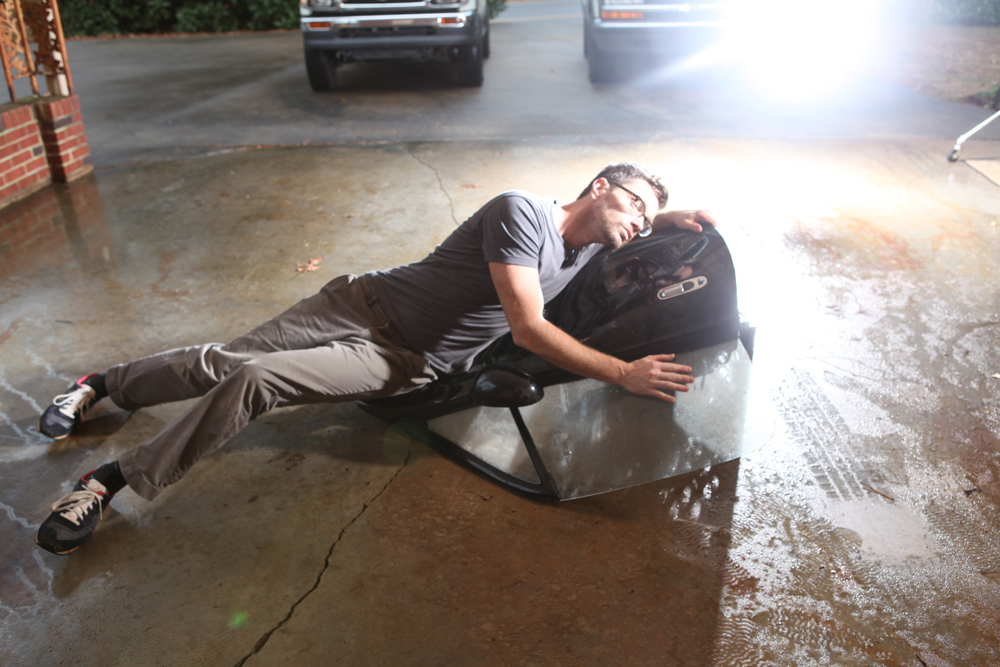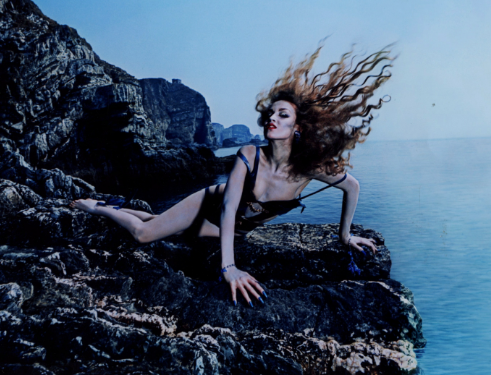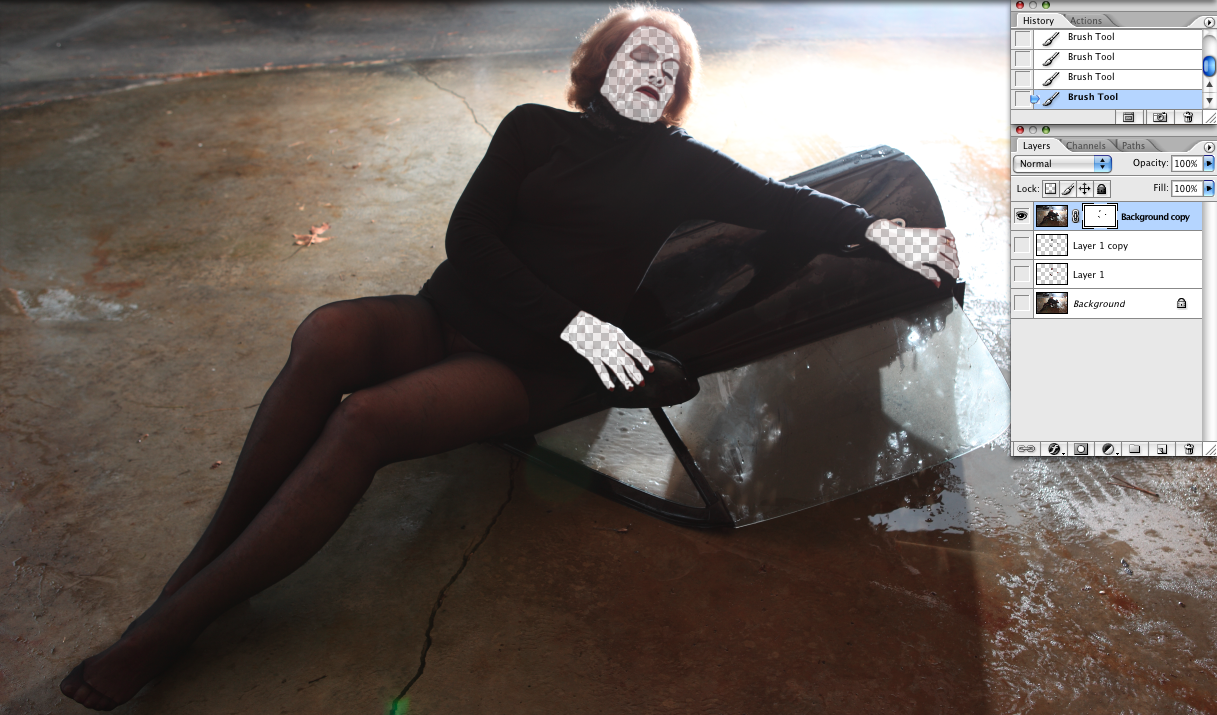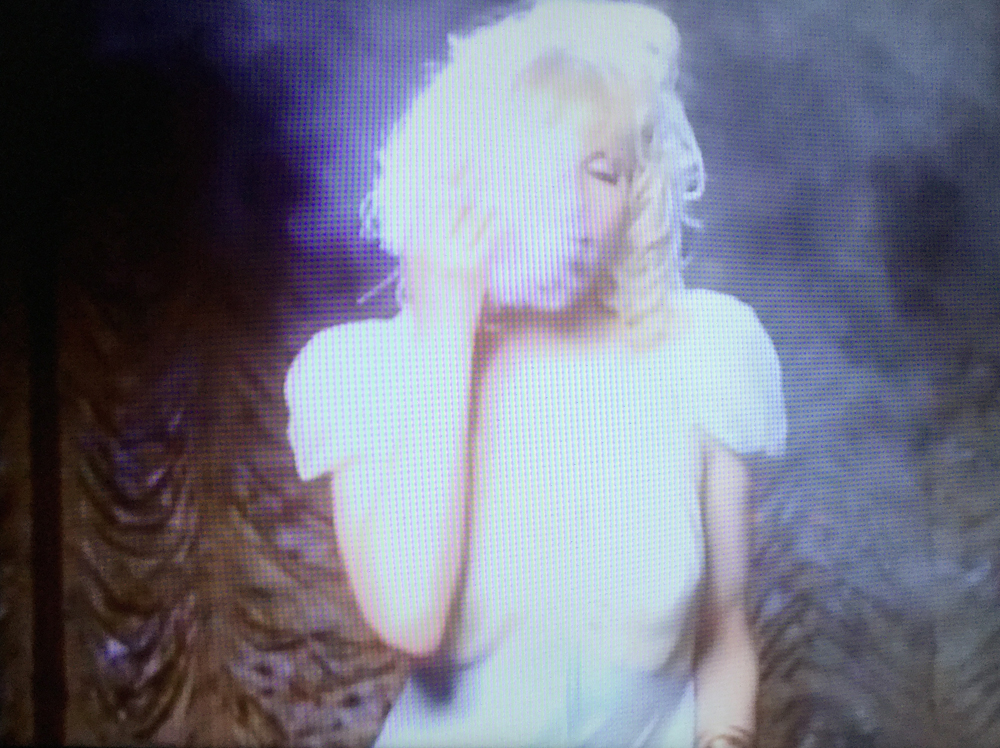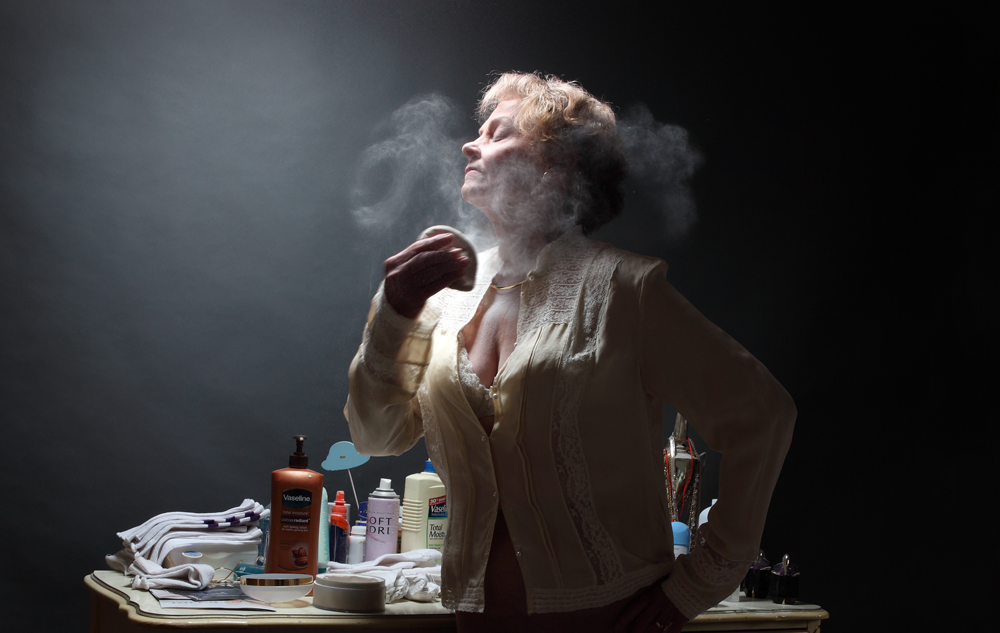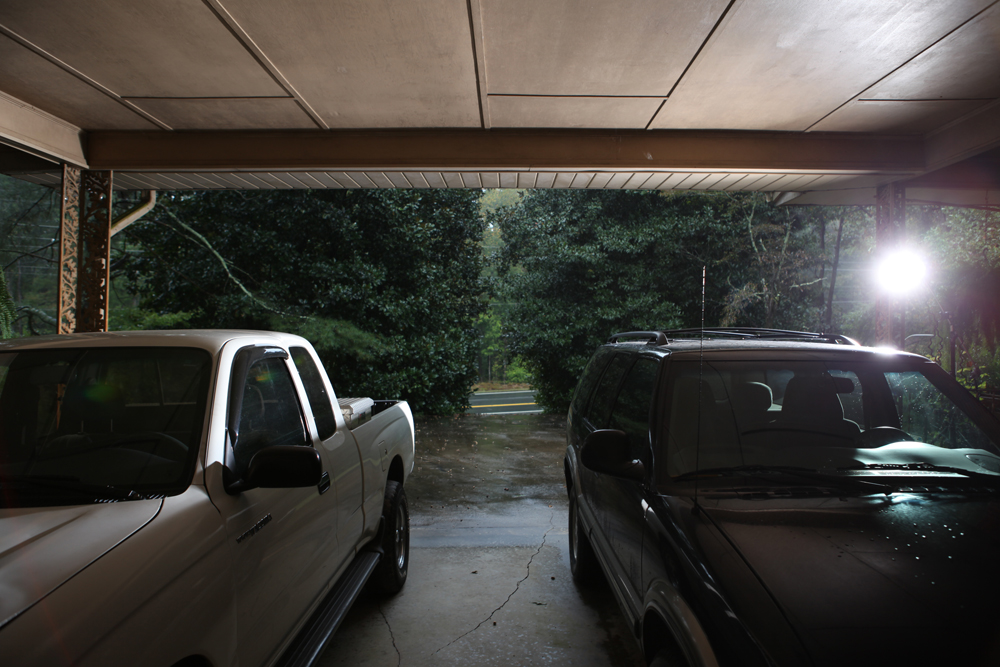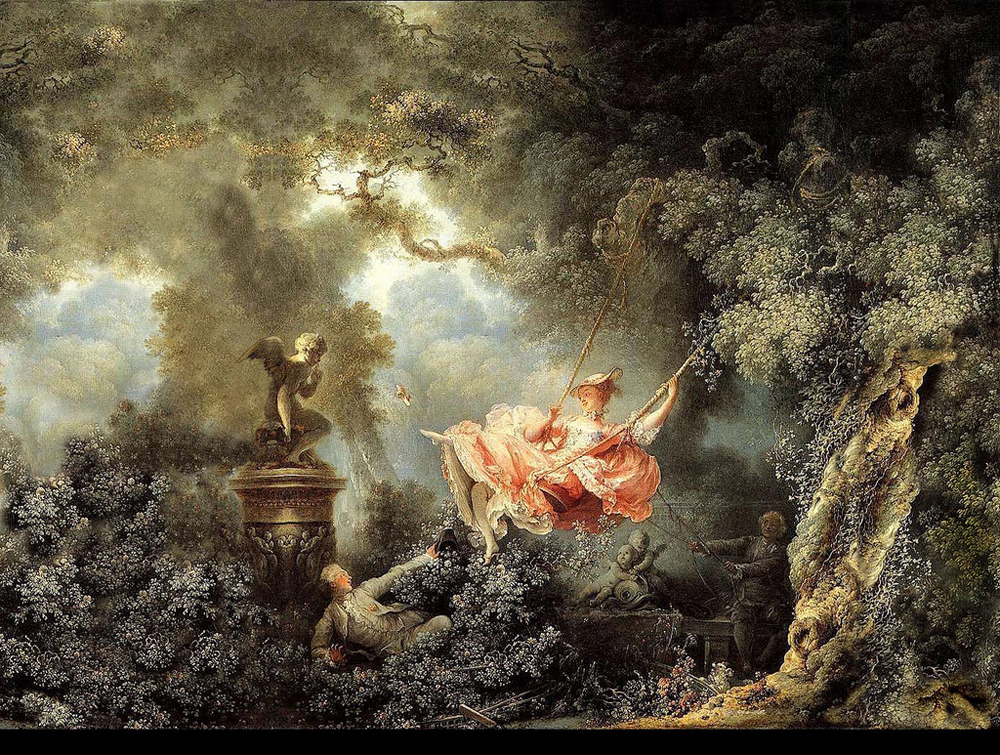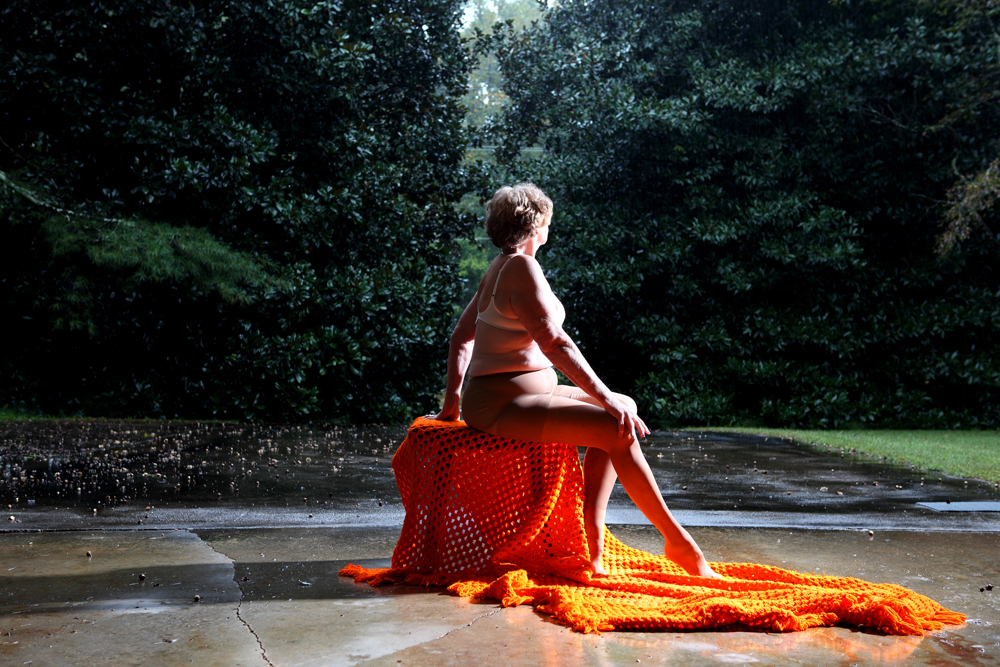Originally published JUNE 9, 2016 // BY JAIME DESIMONE
The paintings of Australian-born Fran O'Neill rely upon a construction/deconstruction equation, where she uses her physical body to produce, alter, destroy, and recreate oversized gestures. Layer upon layer, O'Neill applies paint only to swipe, smear, and remove it with her body or another material. Her paintings are as much as an additive process as a subtractive one, where at times she reinvents imagery on the same canvas. In preparation for Confronting the Canvas: Women of Abstraction, O'Neill answered a few questions about her process and the ideas behind her work.
Fran O'Neill attends the members' preview for Confronting the Canvas: Women of Abstraction. Image courtesy of Thomas Hager.
Describe your approach to painting.
Having grown up in Australia and currently living in the city of New York, the mixing of past experiences of my life become and feed my painting. The ability to manipulate oil paint and watercolor is core to my practice; abstraction, color, movement of the paint, and shifting scale all come into play on the canvas/paper. I crave space, and how “space” can be open, compressed, complex, grand, intimate, and sometimes, all within the same image, intrigues me.
I look for moments in life that have a special or unexpected quality about them. Perhaps it is the way that light hits a surface, or the juxtaposition of shapes, textures or a tiny happening, a memory or a fragment of a dream or reality. There are times when I glimpse something, and I have no idea what I am looking at, or when the strangeness of real life seems dreamlike or indescribable for a split second, then materializes into focus. Sometimes it's that fleeting moment that catches my eye and plays in my imagination. I don't necessarily seek to recreate what I have seen but more the experience of how it felt and how I perceived it. I entwine those experiences with others, and as I begin to paint, and with that, the direct application of paint in the moment can add its own dynamic to the image-making process.
The act of creating becomes “all important” in my process, exploring the fluid movement of the paint as I apply it. How to recreate the tension or emotive quality without needing to name, locate, or describe a narrative or an exact experience/memory. Broad movements, simplified palettes versus intricate and sometimes cluttered space(s). Seeing the process take place on the canvas-drips, glimpses of under layers, forms take shape and/or break down on the surface, the rotation of the canvas, all coalesce to make a whole. My process is organic, intuitive, and improvisational.
I seek to always surprise myself, and with that, I am intent on researching beyond my “go-to mediums,” as I believe it is always necessary for an artist to continually reinvent one's imagery and not to be afraid of where that journey takes me. Striving for newness and to be open to change is a necessary part of my practice.
Visitors discuss Fran O'Neill's forty untitled panels at the Confronting the Canvas members' preview. Image courtesy of Thomas Hager.
How did you develop this unusual approach to abstraction?
I never planned on being an abstract painter. It was a natural and curious progression that began with working from perception. I began as a figure painter and moved to landscape painting. After a conversation with a friend who knew that I have sewn some of my own clothes, wondered if I'd ever considered using "patterns in my work," and I began to use patterned material from various locations as backdrops, teamed with a Balinese doll. Slowly, the doll began to exit the work, and the patterning took precedent. The use of pattern from highly repetitious work began to be more sporadic, and I discovered that it was “mark-making and movement” of the paint that really excited me. This has kept me occupied for sometime now.
What ideas do you explore in your work?
Movement, scale, light, and color. I'm always seeking to surprise myself.
Describe your color palette.
My color palette changes with each painting. I've been known to buy a color that I find ugly or just can't imagine using. Sometimes I use it straight away, other times it sits on my studio table for months, until the moment calls for it. I am after creating light with color and any means necessary to achieve this. No color is out of the question.
Visitors are framed by Fran O'Neill's leading at the Confronting the Canvas members' preview. Image courtesy of Thomas Hager.
Describe your titles. What meaning do they convey?
I deliberately title work in “lowercase,” as I consider the title to be secondary to the painting and more of a way of identifying one from another, not necessarily the “meaning” of the work. I seek simple one- or two-word phrases that don't give too much of a narrative, to allow viewers to have their own experience, not to be swayed by my thinking. Sometimes I use lines from song titles. I've been known to re-title work, until a word or phrase sticks to the image.
What does “abstraction” mean to you?
Now that's a big question. Today, for me it has to do with sensuality and sensibility, in terms of surface. To me there is abstraction in figuration and landscape. It could be the simplification an idea to obtain its essence? Or does that sound just like some “art talk” …
Who, if any, abstract painters have influenced your work?
I've looked at the Abstract Expressionists and others including but not limited to Philip Guston, Joan Mitchell, Lee Bontecou, Helen Frankenthaler, Terry Winters, Elizabeth Murray, Joanne Greenbaum, Amy Sillman, Bill Jensen, Margrit Lewzcuk, and recently Daniel Hesidence. Variations on why they've held my interest include mystery in the making or imagery, a sense of spirit and purpose, along with surprise in the making, and this has allowed me a glimpse into how I see their approach to their vision. This has given me the ability to seek my own voice via paint.
How much do these influences or other inspirations guide your painting process?
We live in such a visual fast-moving word. It is hard to say what doesn't influence my work. In terms of painting and/or painters, I try to see a variety of work, and hoping that on both a conscious and sub-conscious level I am soaking in all that is good, mashing it around and that it comes out in an interesting way on my surfaces.
Do you see yourself as an action painter or one who is continuing the tradition of Abstraction Expressionism?
I don't consider myself an action painter. Though I do recognize and see the link to Abstract Expressionism in my work.
Does being a woman change artistic output?
I don't think it does for me. I just work.
At times, paintings are discussed as masculine; at others, feminine. Are your works gendered?
I've had my work described as “masculine and muscular,” terms that I believe are coined to my work due to the scale and contrast of the mark-making. The connotations associated with gender and any stereotypical ideas are ones that I am not interested in. Either term can be good or bad.
What, if any, is the role of women painters in contemporary art?
I think it is the same as any other gender. To be true to oneself and to seek and go after the journey.
Why do we need this all-female show?
Hmm. Women are still making strides. I do believe that only I can make my work, and this is the same with any other gender. I do think that society does instill ideas regarding gender and that this occurs on a continued and not so subtle way. I struggle with this question. And think back to that quote by Joan Mitchell who was asked to be in a female painting show, to which she declined and said “ask me to be in a painting show” (or something akin to this), and I'm there. There is the chance that someone will not necessarily give it the same credence that they would if it was a male who painted it. I like to think this perception is changing and will continue to change. Like the gun laws, or lack of. Always debatable depending on who is at the table. (An abstract answer?)
Did the feminist movement impact your career?
I've been aware of the feminist movement from undergrad. I use to say that it didn't really affect me as a painter or my career, however, the further I get into my career, that more grateful I am for those women who fought for the right to make work that they wanted and to show the significance of being female. Unfortunately, sexism is still alive. When I teach, I really encourage my female students to find other female artists, present and historical, to enable them to see that anything is possible.
Fran O'Neill discusses her process in front of the grid of forty untitled panels at the Confronting the Canvas members' preview. Image courtesy of Thomas Hager.
Where do you find inspiration?
Anywhere and everywhere.
What's your workspace like? When and where do you like to create your art?
I have a studio in Long Island City with great natural light. When the weather is good, I ride my bike and aim to arrive to my studio early in the morning and work to late afternoon. Additionally, I have a very small room at my house that allows me to make work at home at anytime. Riding my bike gives me good thinking and looking time along the way.
What's your next project?
Always ongoing. To date, I would say that I don't have a start or finish of a project, though looking back, I can see moments when the work changed. And in that process, I step forwards and backwards constantly.
How will exhibiting your work at MOCA Jacksonville affect your career?
Exhibiting at MOCA Jacksonville is a tremendous step for my work and for my career. I see it as confirmation that I am on the right track. Exhibiting along side the other artists is a gift and a significant moment for me, and I am excited to see how the works might talk to each other. Ultimately, I hope the exhibition will allow the audience to see the impact and relevance of abstraction today.
*********
Original post on MOCA Jacksonville site can be accessed here.
O'Neill's work can be seen in the current installation of All Tomorrow's Parties at Hathaway David Contemporary, in Atlanta, GA.











